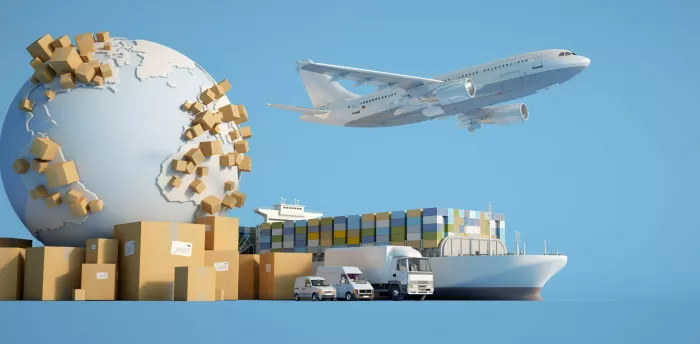On This Page
As businesses continue to expand into international markets, cross-border shipping has become a critical element of success in global trade. Whether you are an e-commerce retailer, a manufacturer, or a distributor, delivering goods across borders offers both lucrative opportunities and significant challenges. From complex customs regulations to unexpected delays and high shipping costs, navigating cross-border logistics can feel overwhelming.
Fortunately, with the right strategies and cross border ecommerce solutions, you can overcome these obstacles and ensure smooth and efficient international shipping operations.
For insights on container selection and storage solutions, you may want to explore this guide on finding the right shipping container solutions, which offers practical tips tailored for global businesses.
Below, we explore some of the most common cross-border shipping challenges and offer practical tips to help you overcome them.
Understanding Customs and Compliance Requirements

One of the most daunting challenges in cross-border shipping is dealing with customs regulations and compliance requirements, which vary from country to country. Incorrect or incomplete documentation can lead to costly delays, fines, or even seizure of goods.
How to overcome it:
- Research destination country regulations: Understand import/export restrictions, duties, taxes, and required permits.
- Prepare accurate documentation: Ensure commercial invoices, packing lists, certificates of origin, and any necessary permits are filled out correctly.
- Work with customs brokers: These experts can help navigate complex regulations and reduce the risk of non-compliance.
Managing Shipping Costs
Cross-border shipping can be expensive, especially when factoring in tariffs, duties, taxes, insurance, and last-mile delivery costs. Poorly managed costs can quickly erode profit margins.
How to overcome it:
- Consolidate shipments: Combine smaller orders into larger shipments to reduce per-unit shipping costs.
- Partner with multiple carriers: Compare rates between international couriers and freight forwarders to get the best deal.
- Use technology: Leverage shipping management platforms to optimize routes, compare carrier prices, and automate paperwork.
Dealing with Delivery Delays
Delays caused by customs clearance, weather disruptions, supply chain interruptions, or carrier issues can hurt customer satisfaction and damage your brand’s reputation.
How to overcome it:
- Set realistic delivery timelines: Clearly communicate estimated delivery times to customers, factoring in possible delays.
- Track shipments in real time: Use tracking tools to monitor the status of your shipments and proactively resolve issues.
- Have a backup plan: Work with multiple logistics providers or maintain buffer stock in local warehouses to ensure timely fulfillment.
Handling Language and Cultural Barriers
Communicating with foreign logistics providers, customs officials, and customers can be tricky due to language and cultural differences, which can lead to misunderstandings or mistakes.
How to overcome it:
- Hire multilingual staff or translators: This ensures clear communication throughout the supply chain.
- Work with local partners: Local freight forwarders or third-party logistics providers (3PLs) understand the local market and can bridge cultural gaps.
- Provide translated customer support: Offer support in the local language to build trust with international customers.
Navigating Payment and Currency Issues
Currency fluctuations, international payment methods, and banking restrictions can complicate cross-border transactions.
How to overcome it:
- Use secure international payment platforms: Platforms like PayPal, Wise, or Stripe can simplify payments and reduce currency conversion risks.
- Offer multiple payment options: Cater to local customer preferences by providing familiar payment methods.
- Lock in exchange rates: When possible, secure fixed exchange rates to protect against currency volatility.
Ensuring Proper Packaging and Labeling
Improper packaging or labeling can lead to damage, lost goods, or customs rejections.
How to overcome it:
- Use international-grade packaging: Choose materials that can withstand long-distance transportation and handling.
- Label accurately: Ensure labels include all required information, such as country of origin, HS codes, and handling instructions, following destination country standards.
Keeping Up with Changing Regulations
Global trade is constantly evolving, with new trade agreements, tariffs, and regulations regularly introduced.
How to overcome it:
- Stay informed: Subscribe to industry newsletters or work with a logistics provider that keeps you updated on regulatory changes.
- Be flexible: Build adaptability into your supply chain to respond quickly to changes without disrupting operations.
Final Thoughts
While cross-border shipping presents unique challenges, it also unlocks tremendous growth potential for businesses of all sizes. By proactively addressing common hurdles, such as customs compliance, shipping costs, delivery delays, and communication barriers, you can streamline your international operations and deliver exceptional service to customers worldwide.
Partnering with experienced logistics providers, investing in technology, and maintaining clear communication are key to overcoming these challenges. With the right approach and tool as well as technology, cross-border shipping can become a powerful competitive advantage for your business.
Post Comment
Be the first to post comment!





